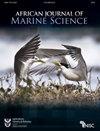Spawning observations of Pomadasys commersonnii in the marine section of the Knysna estuarine bay, Western Cape, South Africa
IF 1.4
4区 生物学
Q3 MARINE & FRESHWATER BIOLOGY
引用次数: 0
Abstract
Knowledge of the location and timing of spawning events is critical for fisheries management. As is the case for many southern African fishes, the spotted grunter Pomadasys commersonnii was historically thought to reproduce in the coastal waters off KwaZulu-Natal Province (KZN), South Africa, with subsequent egg and larval dispersal towards the Eastern Cape (EC) and Western Cape (WC) provinces facilitated by the Agulhas Current. More recently, year-round residency within areas of the EC and the observation of reproductively mature individuals in certain WC estuaries has provided some support for spawning events southwest of KZN. This study reports empirical evidence of active spawning in the sheltered marine section of the Knysna estuarine bay, WC. Observations of spawning behaviour were noted during large aggregations of adult fish over shallow sandbanks in February 2017. A single male and female were collected, and their reproductive organs were macroscopically staged as ‘spawning.’ Gonad histological examination verified active spawning of the female via the presence of hydrated oocytes, migratory nucleus oocytes and post-ovulatory follicles. Future research should focus on the identification and conservation of critical spawning events and investigate the potential role of large marine-dominated estuarine systems in the life history of this and other marine estuarine-dependent species. Lastly, the results of this study contribute towards a knowledge base that challenges the traditional theory of northeastward spawning migrations as the sole life-history strategy for numerous South African fishery species.在南非西开普省克尼斯纳河口湾海洋部分的产卵观察
了解产卵的地点和时间对渔业管理至关重要。和许多南部非洲鱼类一样,人们历史上认为斑鲷鲷在南非夸祖鲁-纳塔尔省(KZN)的沿海水域繁殖,随后卵和幼虫在阿古拉斯洋流的推动下向东开普省(EC)和西开普省(WC)扩散。最近,在欧共体区域内的全年居住和对某些WC河口繁殖成熟个体的观察为KZN西南部的产卵事件提供了一些支持。本研究报告了在WC克尼斯纳河口湾的庇护海洋部分活跃产卵的经验证据。2017年2月,在浅滩上大量成鱼聚集期间,观察到了产卵行为。采集雄性和雌性各一只,它们的生殖器官在宏观上处于“产卵”阶段。“性腺组织学检查证实,通过水合卵母细胞、迁移核卵母细胞和排卵后卵泡的存在,雌性产卵活跃。”未来的研究应侧重于关键产卵事件的识别和保护,并调查大型海洋主导的河口系统在该物种和其他海洋河口依赖物种的生活史中的潜在作用。最后,这项研究的结果有助于建立一个知识库,挑战传统的理论,即东北产卵迁徙是许多南非渔业物种唯一的生活史策略。
本文章由计算机程序翻译,如有差异,请以英文原文为准。
求助全文
约1分钟内获得全文
求助全文
来源期刊

African Journal of Marine Science
生物-海洋与淡水生物学
CiteScore
2.60
自引率
16.70%
发文量
17
审稿时长
6-12 weeks
期刊介绍:
The African (formerly South African) Journal of Marine Science provides an international forum for the publication of original scientific contributions or critical reviews, involving oceanic, shelf or estuarine waters, inclusive of oceanography, studies of organisms and their habitats, and aquaculture. Papers on the conservation and management of living resources, relevant social science and governance, or new techniques, are all welcomed, as are those that integrate different disciplines. Priority will be given to rigorous, question-driven research, rather than descriptive research. Contributions from African waters, including the Southern Ocean, are particularly encouraged, although not to the exclusion of those from elsewhere that have relevance to the African context. Submissions may take the form of a paper or a short communication. The journal aims to achieve a balanced representation of subject areas but also publishes proceedings of symposia in dedicated issues, as well as guest-edited suites on thematic topics in regular issues.
 求助内容:
求助内容: 应助结果提醒方式:
应助结果提醒方式:


